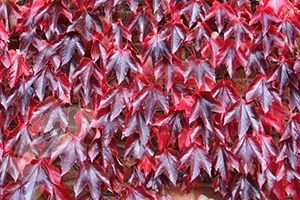Botanical name: Parthenocissus tricuspidata
Common name: Boston Ivy
Family: Vitacea
Origin: Eastern Asia – Japan, Korea, North East China


Boston ivy is actually a native of China and Japan. An attractive vining plant, its glossy green leaves become red or purplish in autumn. The vine is named after the city where it's widely cultivated to decorate buildings. In particular, Boston ivy is known for gracing the Ivy League colleges. Planting ivy at the right time of year gives it a healthy start.

Boston ivy is hardy up to USDA hardiness zone 4 and grows in a variety of soils, from light sand to heavy clay, as long as the site is well drained. Boston ivy grows best in full sunlight and tolerates some light shade. However, it will not survive in full shade. Select the planting site carefully, taking note of nearby buildings and plants. As it matures, Boston ivy grows as high as 50 feet, climbing up buildings and available support structures, including trees.

Boston ivy is a fast grower; it is advisable to plant it at least 15 feet away from structures you don't wish to cover. The plant flowers in July to August. Flowers are pollinated by insects before reproduction begins. In October and November, the seeds created by the flowers are ripened. Seeds from Boston ivy may be harvested and cultivated to create additional ivy plants.

Thank you for the review.
Great comment, nice pics.